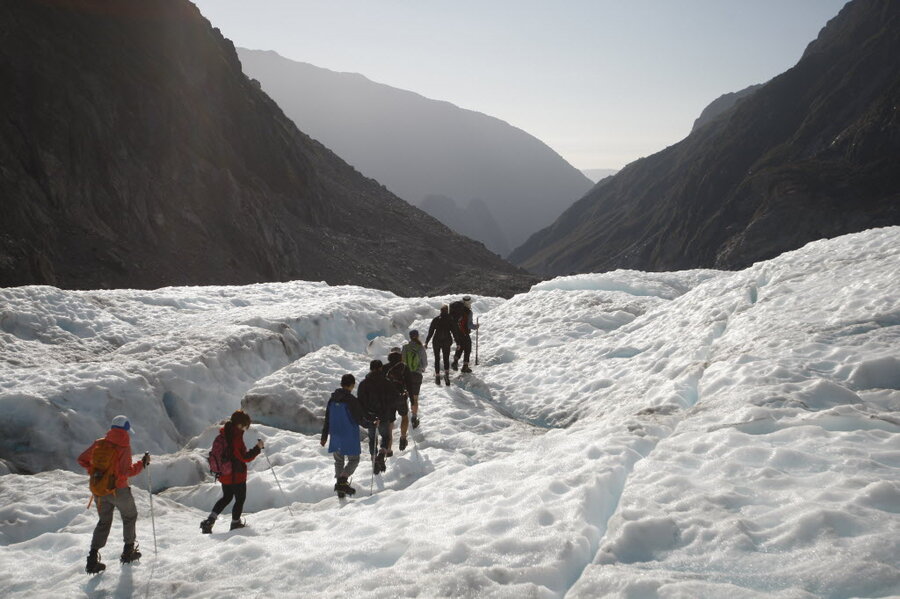Hiker rescued from snowed-in hut in NZ, weeks after losing her way
Loading...
A woman from the Czech Republic has been rescued from the frozen New Zealand wilderness, where she survived an entire month after her partner fell to his death and she became lost in the snow.
Police inspector Olaf Jensen told the Associated Press that the woman was admitted to a local hospital and found to be in reasonable health, despite experiencing frost bite, hypothermia, and other minor injuries.
"It's very unusual for someone to be missing in the New Zealand bush for such a long period without it being reported," Mr. Jensen said.
The woman and her partner were hiking the 20-mile Routeburn Track, which typically takes three days. However, snow had obscured the trail markings, and the couple got lost; the man died after falling down a steep slope, just two days into the journey.
The woman then spent the next three days and nights outside in freezing conditions. She then found a ranger's hut, however, which she broke into and used for shelter until being found, weeks later, by a search helicopter.
Geoff Owen, a manager for the Department of Conservation, said that the hut where the woman took shelter likely contained firewood and food, and that she may have broken into other huts nearby, as well. The building was stocked with a radio, but she could not get it to work. Without any other means of communication, the woman traced a large "H" for "Help" sign in the snow. Because of the fierce weather conditions, however, few other hikers were on the trail.
"Given her experience and the avalanche risk, she decided it was best for her safety to remain in the hut, and that was the correct decision to make," Jensen said.
The search and rescue helicopter was sent once the Czech consulate alerted New Zealand authorities, who found the couple's car at the trail head.
The Routeburn Track, which is located on New Zealand's South Island, is one of the country's most popular hiking areas. However, in the winter months, from June through August, the trail becomes treacherous, accessible only to experienced climbers with crampons and ice axes. The couple was well equipped and experienced, Jensen said, but the extreme conditions most likely caught them off guard.
Before setting out on a winter hike, trail groups recommend that nature lovers pack extra supplies, particularly food, as hiking through snow requires much more energy. Other recommended gear includes headlamps, water, sleeping bags, portable shovels, and avalanche beacons.
During a snowstorm, familiarity with the landscape and navigation tools also become more critical, since the snow may obscure the trail and its markings.
"It's not easy trying to find your way on an unfamiliar backcountry trail using only a topo map when the trail is covered under a thick blanket of snow, and clouds obscure the identifiable peaks around you," the Washington Trails Association writes on its website. "This makes map and compass skills essential for winter backcountry travel."
Additionally, someone not on the trip should always have a copy of hikers' itinerary so that they can alert emergency services if it appears anyone is missing. In New Zealand, the emergency contact number is 111.
This report includes material from the Associated Press.








